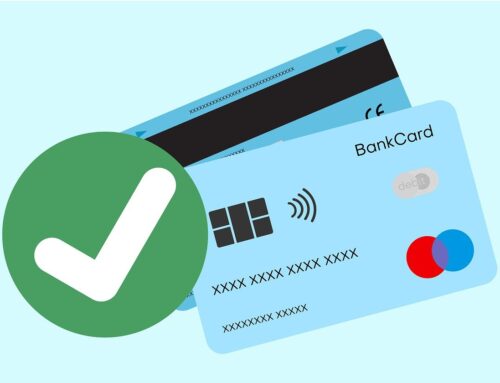
K1 vs. K3 Visa: A Guide for Bringing Your Filipina Fiancé or Spouse to the US
So, you’ve found the one — and she’s in the Philippines. Whether you’re planning to get married or already tied the knot, the next big step is bringing her to the United States. That’s where the visa process comes in. It might sound confusing at first, but once you understand the difference between the K1 and K3 visas, the path forward gets a lot clearer.
This guide walks you through both options so you can choose what works best for your relationship. Whether you’re engaged or already married, we’ll help you understand the timing, rules, and steps involved.
K1 or K3 — What’s the Real Difference?
Both the K1 fiancé visa and the K3 spouse visa are made to bring your Filipina partner to the US. But they’re not the same thing, and which one you use depends on where you are in your relationship. Let’s break it down so you know what to expect.
What’s Your Relationship Status Right Now?
If you’re not married yet and planning a wedding soon, the K1 visa is for you. To qualify, you’ll need to prove you’ve met in person in the past two years and that you plan to get married within 90 days of her arriving in the US. It’s built for couples who are serious and ready to make it official once she lands.
Already married? Then you’ll want to look into the K3 spouse visa. This one is for couples who had their wedding outside the US and now want to live together in America. The big difference here is that the wedding has already happened — so you’re applying as a married couple.
How Long Does It All Take?
For couples applying from the Philippines, the K1 visa usually takes around six to seven months. It’s not a guarantee — delays happen — but that’s the current average. Things like holidays, embassy backlogs, or missing documents can slow it down a bit.
The K3 spouse visa takes a little longer, somewhere between seven and nine months. That’s because it includes a few extra steps, like confirming your marriage is legit. Still, it’s a solid path for couples who are already married and want to be together in the US as soon as possible.
What Can She Do After She Arrives?
The purpose of the K1 visa is really clear — your fiancée comes to the US so you can get married. That’s it. She can’t work right away or switch her visa status without going through another process after the wedding.
The K3 visa gives a little more flexibility. Since you’re already married, she can move in and get started on the process to stay permanently. Once she’s in the US, you can file to adjust her status so she can get a green card. That opens the door to working and living here for the long haul.What to Know Before You Apply for the K1 Fiancé Visa
If you’re engaged to a Filipina and planning to get married in the US, the K1 visa is made just for you. It’s a step-by-step process, and knowing what to expect makes everything smoother. This part of the guide walks you through who qualifies and what you’ll need to do from start to finish.
Who’s Eligible to Apply for the K1 Visa?
To get started, you need to be a US citizen. You and your fiancée must have met in person sometime in the past two years — unless there’s a very good reason why you couldn’t. You also have to show that you both seriously plan to get married within 90 days after she arrives in the US. Finally, you need to prove you can support her financially once she’s here.
How the K1 Visa Process Actually Works
The first step is filing Form I-129F with USCIS. That’s your official petition to bring your fiancée to the US. Once that gets approved, your case moves to the National Visa Center. The NVC will then send instructions to your fiancée in the Philippines about what documents she needs to prepare — things like a medical exam and police clearance.
After that, it’s time for the big one: the visa interview. This happens at the US embassy in Manila. If all goes well, she’ll get her K1 visa and be on her way to the US to start your life together.
A Few Things to Keep in Mind About the K1 Visa
Right now, it usually takes around six to seven months to complete the whole process if you’re applying from the Philippines. That timeline can shift depending on how busy the agencies are or if anything needs to be fixed along the way. Also, your fiancée can’t legally work while on a K1 visa and can’t switch her status until after you’re married. Most importantly, the two of you must tie the knot within 90 days of her arriving — or the visa becomes invalid.
Already Married? The K3 Spouse Visa Might Be for You
If you and your Filipina partner already said “I do” outside the US, the K3 visa is the one to look at. It’s made for married couples who want to start their life together in the United States. This section walks through the requirements and the steps involved so you know exactly what’s ahead.
Here’s Who Qualifies for the K3 Spouse Visa
To apply, you need to be a US citizen. You also must already be legally married to your partner — and the ceremony has to have taken place outside the US. You’ll need to show that you plan to live together as a married couple in the US and that you’re able to support her financially once she gets there.
How the K3 Visa Process Moves Along
It starts with filing Form I-130 through USCIS. Once it’s approved, your case heads over to the National Visa Center. Just like with the K1, the NVC will reach out to your spouse with the next steps — usually involving document submissions, a medical exam, and police clearance.
After that, your spouse will have her visa interview at the US embassy in the Philippines. If approved, she’ll be granted the K3 visa and can join you in the US to begin your new chapter together.
-
Should You Go It Alone or Get Some Help?
If you’re planning to bring your Filipina fiancée or wife to the US, figuring out the K1 or K3 visa process can feel like a lot. One of the first decisions you’ll face is whether to do it all yourself or hire a visa agency to help. There’s no one-size-fits-all answer — both paths have upsides and trade-offs.
What’s Good About Doing It Yourself?
Going the DIY route can save you money. You don’t pay agency fees, and you get to handle every part of the process on your own. There’s also something satisfying about seeing it through yourself, knowing you made it happen. Plus, you have full control — no middlemen, no waiting for updates from someone else.
But keep in mind, it’s going to take time. You’ll need to research each step, gather every required document, and stay on top of forms and deadlines. Mistakes can slow everything down or even lead to a denial. If you’re not great with paperwork or details, it can get stressful fast.
Why Some People Choose a Visa Agency
If you don’t want to deal with all the paperwork or you’re just not confident about doing it solo, a visa agency can be a big help. They’ve done this before — many times — and know how to avoid common mistakes. They’ll guide you through each step, help gather the right documents, and take a lot of the pressure off.
The downside? It costs more. Agencies charge for their services, and not all of them are created equal. You’ll need to do your homework to make sure you’re working with someone experienced and trustworthy. You’ll also be handing over some control, so make sure you’re comfortable with that.
Staying on Track With a Smart Checklist
Whether you’re doing everything yourself or working with an agency, staying organized is key. A checklist helps you keep everything in one place and makes sure nothing gets missed. When you’re juggling forms, deadlines, and official documents, a simple list can make a big difference.
Why a Checklist Makes Life Easier
Having a clear list in front of you takes away a lot of the guesswork. You won’t feel as overwhelmed when you know exactly what’s needed and what you’ve already done. It helps prevent that last-minute scramble when you’re digging through drawers looking for missing paperwork. Most of all, it gives you peace of mind — and that’s something you can’t put a price on.
What Should Be on Your K1 or K3 Checklist?
The details depend on which visa you’re applying for, but here’s a general outline to help you get started. Always check the latest info on the USCIS website or the US embassy page in the Philippines to make sure nothing has changed.
Sample Checklist for the K1 Fiancé Visa
For the US citizen:
• Proof of citizenship (passport or birth certificate)
• Financial documents like tax returns or job verificationFor your Filipina fiancée:
• Valid Philippine passport
• Birth certificate
• Police clearance
• Medical exam results
• Proof of relationship (photos, chats, call logs)Sample Checklist for the K3 Spouse Visa
For the US citizen:
• Proof of citizenship
• Tax documents or job info
• Marriage certificate (from outside the US)For your Filipina spouse:
• Philippine passport
• Birth certificate
• Police clearance
• Medical exam
• Proof you’re in a real marriage (wedding photos, shared bank records, etc.)

















